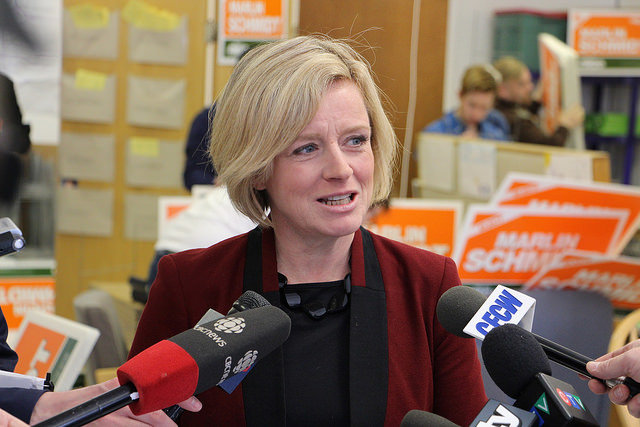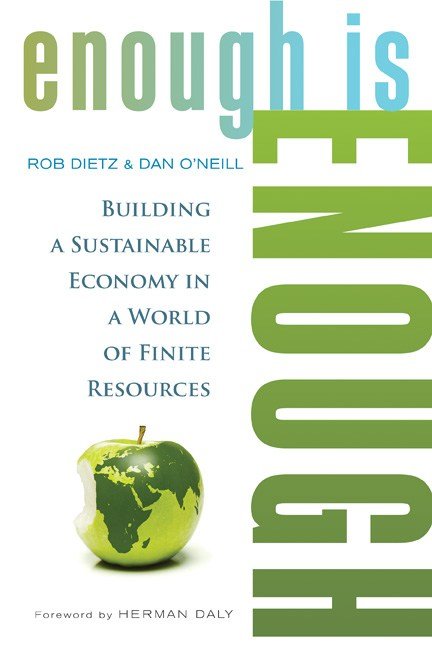Houston, We Have a Credit Problem
by Neil Tracey
In 2021, China had around 30 million homes sitting vacant for extended periods. There’s enough unused housing in China to house around 80 million people, roughly the population of Germany. This isn’t “slack” in the market; there is little hope that these homes will someday find an occupant. These homes are bound to remain empty.

Our growth-obsessed economy requires credit to “succeed,” leaving millions in debt in a bloated economy. (CC BY 2.0, Sean MacEntee)
Indeed, most of these homes are simply held as financial assets; people who already own one home buy another and hang on to it, expecting it to appreciate. Even more peculiarly, Chinese property developers continue to build more homes. The absurdity of this market made headlines late last year with the story of Evergrande, a Chinese property developer that had accumulated over $350 billion in debt, then defaulted on large sums. Now, months after Evergrande first threatened to default, it has slipped from the headlines. However, it’s worth revisiting the story of Evergrande to understand just how it came to be. Why was a developer building more homes in a country that already had available housing for another 80 million people?
The answer lies in credit. Credit is driven by, and in turn reinforces, expectations for the future. By driving expectations for the future, credit steals democratic control over the future from citizens and gives it to market forces. We’ll explore this issue by looking at Houston, Texas and how the credit market drove its growth. Then we will address what credit may look like in a steady state economy and how steady-state economics may return control of their futures to citizens.
Extreme Growth and Houston: The “Limitless City”
Visiting Houston, one thing stands out: it’s a BIG city. With a population of over 5 million and a metropolitan area of over 9,000 square miles, Houston is the only American city without formal zoning restrictions. In his book, Ages of American Capitalism, Jonathan Levy explains that Houston is culturally, economically, and geographically defined by its cycle of credit-driven growth.
In Houston, there was an expectation that the city would expand. This expectation was the result of fomenting hysteria over oil, housing expansion, and pop culture. In their 1981 song Houston is Hot Tonight, Iggy Pop sings, “Bright lights, Houston is hot tonight / Arabian sheiks and money, up in the sky / Now I don’t mind, a bloodbath / When I’ve got oil on my breath.” Combining exotifying imagery, money, and oil, Iggy Pop captures the overwhelming expectation of growth that seized Houston. This expectation of growth led to the expansion of cheap credit that let Houston expand so rapidly that its edges became undefinable. Urban geographers, trying to understand the limits of Houston, had to come up with a whole new set of terminology. Houston was a “multi-node city,” an “edge city,” an “edgeless city,” and a “boundless city.” Indeed, the only thing that seemed certain was that Houston was growing, and wouldn’t stop.

Houston is certainly “hot tonight,” and getting hotter. (CC BY-NC 2.0, NASA’s Marshall Space Flight Center)
Houston’s role as a “limitless city” was due to credit. Credit is money or goods extended by a creditor to a recipient based on the understanding that the recipient will pay it back in the future, plus interest. Therefore, credit is a bet on the future ability of the recipient to pay back the money they borrow, and then some.
For this article, we’ll limit our discussion of credit to credit extended by a private creditor; in practice, that may be an individual, bank, or company seeking to make a profit (as opposed to a government agency advancing a social objective). Given this definition of credit, we can see how it may create a cycle of growth. Creditors decide to whom they should give credit based on who is likeliest to repay in the future. Creditors look to companies and individuals with historically high growth rates as a determining factor. In turn, having access to credit enables recipients to grow. A cyclical relationship between credit and growth ensues, whereby credit leads to growth, which leads to more credit, which leads to more growth, and so on.
This model of credit-driven growth can be seen in Houston, where growth expectations attracted the market for credit, since the promise of growth suggested that future property prices would increase. Thus, the expectation of growth meant that Houston applicants were perceived as “good bets” for repayment. This enabled the credit-fueled expansion of Houston as a business. At the same time, Houston’s expansion fueled the expectation that it would continue to expand. This expectation, then, fueled its expansion. Thus, the self-reinforcing mechanism of credit and growth expectations persisted.
At some point, this cycle of growth confronts the physical constraints of the natural world. After Hurricane Harvey dumped 51 inches of rain on Houston in 2017, the New York Times published: “A Storm Forces Houston, the Limitless City, to Consider Its Limits.” Since the flood, Houston has made little progress in considering those limits. Houston appointed a “flood czar” who wants to increase Houston’s green spaces to help absorb flood waters, but there’s no movement to limit the city’s growth. Only two years after Hurricane Harvey, the Houston City Council recklessly approved the development of a 100-year floodplain into condominiums.
Possibilities for Credit in a Steady State Economy
Due to this self-reinforcing cycle, the credit market is incompatible with a steady state economy. Ideas for how to reform this cycle come from a rather surprising source: John Maynard Keynes. Far from a steady stater, Keynes was famous for pitching the “propensity to consume” as well as government policies designed for growth. However, towards the end of his General Theory of Employment, Interest, and Money, Keynes presents some rather unique thoughts on the role of credit.
One idea for reform comes from the price regulation of credit. The price of credit (that is, the real interest rate) could be regulated to avoid unsustainable growth. The Federal Reserve already uses its power to set interest rates, and has long prioritized low rates to stimulate growth. However, the Fed could use a more nuanced approach to setting particular interest rates for loans in specific markets. There are certain areas of the economy that need credit to launch, such as the renewable energy sector. The Fed, with a little urging from Congress and the president, could set low interest rates for these sectors, essentially subsidizing them via differential interest rate. Outside of these sectors, the Fed would set higher interest rates to lessen the rate of growth in other sectors, and of GDP at large.
As a macroeconomic actor, the Fed wouldn’t be keen on dabbling with sectoral distinctions. If necessary, Congress could pass a bill to establish differential interest rates, if not directly via the Fed, then indirectly via fiscal policy such as credit supplements or taxes. Presumably such a law would have a sunset clause or be revisited and readjusted annually, as with an appropriations bill.
A related option is for credit to be socialized and overseen by a government agency. (While the quasi-governmental Fed exerts control over interest rates, most actual credit is extended through private banks.) Credit would be fully controlled, in other words, by democratic institutions.
Socializing credit would enable the government to marry its fiscal and monetary policies, extending credit to essential industries and limiting credit for increasingly outdated or harmful ones. However, for this proposal to work, the federal government would have to concurrently abolish the private credit system and limit access to foreign credit.
 Neil Tracey is a junior at Georgetown University and an economic policy intern at CASSE.
Neil Tracey is a junior at Georgetown University and an economic policy intern at CASSE.





Herman Daly wrote about abolishing fractional reserve banking. Reserve requirements set by the Fed loosen or tighten the supply of credit (money created by banks). A bank balance sheet has assets (mainly loans owed to the bank) on the left side, and obligations the bank owes (deposits from savers) plus net worth (bank capital, dollars the bank owns) on the right side. And the two sides always balance. A = L+NW So when there are bad loans on the left side, net worth shrinks until the bank doesn’t have enough assets to pay back depositors. To avoid bank runs, government guarantees deposits but requires a minimum capital reserve percentage to cushion against risks of loss to the federal deposit insurance fund. If the fed raised capital reserve requirements from 10% to 20%, then the bank could only make $5 of new loans for every dollar of net worth instead of $10, and lending would shrink. Which would reduce economic activity towards steady state. Daly’s extreme version was $1 of loans for $1 of bank capital, a 100% reserve requirement. They couldn’t lend money they don’t have. Banks could no longer create money out of thin air. Currently, the reserve requirements are much more arcane and complicated, leading to probable collapses like 2008. Bank assets (the left hand side of the balance sheet) are classified by risk, so lower reserve requirements on less risky loans. This allows banks to game the system and end up with reserves that are too low–maybe only 2% before 2008 crash. Another aspect is derivatives that create huge extra risks and allow the banks 30/1 leverage or more, instead of more prudent 10/1 which is still too low to cushion against big drops in asset values. The overall point is that macroeconomic regulation can cut growth (otherwise known as causing recessions, hence the political difficulties of selling steady state) Steady state means we need an income safety net in case of job losses. So Daly, Czech, et al talk about social justice.
Thank you for this very important article. This is real news that everyone should have access to. I wish there was more information like this in popular media sources. Really for me the gist of it is that credit makes money out of thin air. The whole system is so divorced from reality. Also, I loved that you managed to quote Iggy Pop for this article! Thanks again!